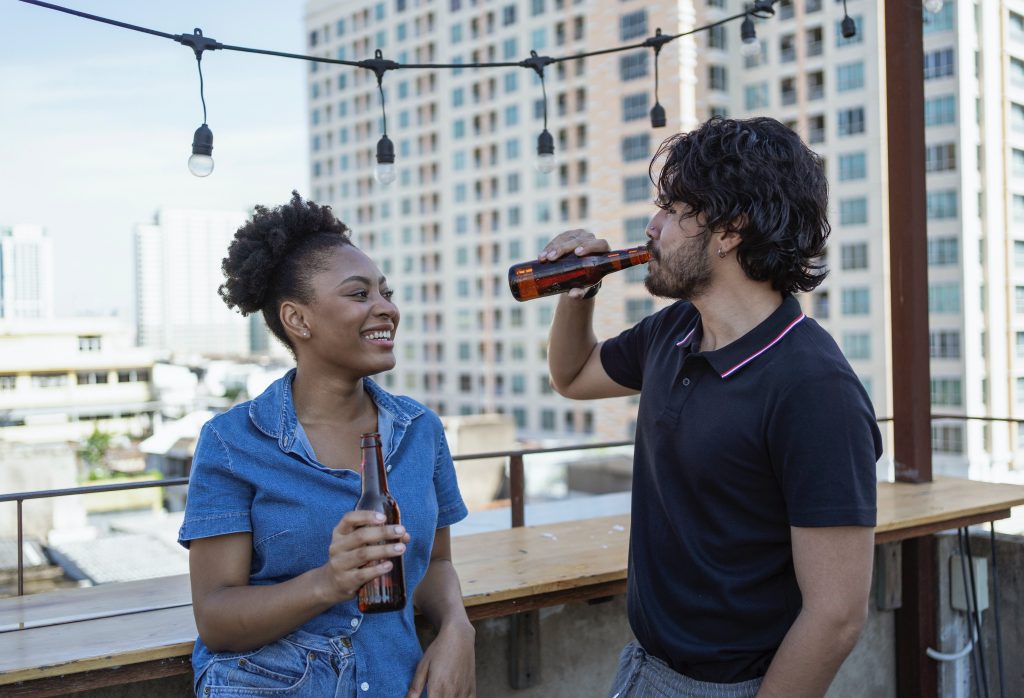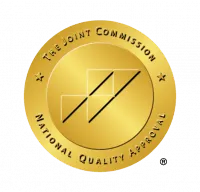Why Can It Take People So Long To Realize Their Drinking Is Unhealthy?
You probably have an image in your mind of what alcohol addiction or being an “alcoholic” looks like. Whatever that picture is, it probably doesn’t resemble you or your friends and family members. But alcohol use disorder (AUD) can affect anyone, and the early signs and symptoms aren’t always easy to recognize.
That’s because AUD exists on a spectrum, and it looks different from person to person. It’s common for people to drink excessively for a while before realizing they have an issue, and in many cases AUD can creep up on a person.
Why does alcohol use disorder work this way, and how can you catch it early? And if you feel you may be developing a problem, what can you do about it?
Why People May Not Realize They are Drinking Too Much

Social Expectations
Alcohol use is normalized in our culture, and many people are unaware of what constitutes a risky amount. Beginning with teen drinking, then college alcohol culture, and finally even adult peer pressure, our environments can encourage us to drink unhealthy and unsafe amounts of alcohol.
Social norms and expectations not only encourage people to drink, they can also lead people to believe that heavy drinking isn’t particularly dangerous. After all, lots of people do it, and it isn’t exactly frowned upon.
In fact, according to the 2020 National Survey on Drug Use and Health (NSDUH), 61.6 million Americans binge drink (consuming four drinks on a single occasion for women, or five drinks on a single occasion for men). About 17.7 million of these individuals were also heavy drinkers, defined as binge drinking five or more times in the past 30 days. Social expectations certainly play a role in the prevalence of drinking too much, and in not realizing what counts as “too much” in the first place.
Read more: Drinking Levels Defined
Brain Chemistry
Alcohol use disorder doesn’t happen overnight; it develops gradually. Much of this process is linked to the brain’s “reward” system, which is activated by alcohol. Alcohol triggers a surge of dopamine, and the brain begins to associate alcohol with pleasure.
Over time, the brain begins to actively seek alcohol, leading to cravings. As you build a tolerance for alcohol, you’ll also gradually need to drink more and more to experience the same pleasurable sensation. But drinking more alcohol more frequently can lead to dependence, and alcohol use disorder.
Alcohol also damages the brain’s prefrontal cortex. This area of the brain is involved in decision making, impulse control, and problem solving. Together, these brain changes make it difficult to keep drinking under control—and even to realize when it’s getting out of control.
Read more: How AUD Happens
Denial
The combination of social expectations and changes in brain chemistry can easily lead to denial about problem drinking. AUD develops so gradually that it can go unnoticed, and problem solving and decision making are impaired in the process.
Meanwhile, society is sending confusing messages about excessive drinking and how dangerous it truly is. Many people believe that if they can go to work and handle their responsibilities, then their drinking—no matter how much or how frequent—isn’t a problem. And if the people in your life drink just as much and don’t seem concerned, it’s common to deny that your alcohol use is starting to cross a line.
Denial is the most common reason that people don’t cut back on alcohol or seek help. The 2020 NSDUH found that among the 38.4 million people aged 12 or older who had a substance use disorder and didn’t get help, 97.5% (37.5 million people) did not feel that they needed treatment. If you don’t realize or can’t admit that your alcohol use has crossed into problem drinking, you won’t feel motivated to make a change.
How To Catch the Problem Early, and Redirect Yourself

AUD exists on a spectrum, and many people fall into a gray area. So, how can you assess your alcohol use and determine whether your drinking is unhealthy?
Signs of problem drinking can include:
- Craving alcohol
- Regularly drinking more than you planned
- Feeling concerned about your drinking, but not being able to cut back or quit permanently
- Drinking to cope with stress or difficult emotions
If you’re unsure about your drinking, take our alcohol use assessment to see where you stand.
Find Alternative Activities and Coping Strategies
Cutting back on alcohol can be a challenge. Some people wonder how drinking less will affect their social life. Others may have trouble figuring out how to relax without alcohol.
Try the following activities for alcohol-free fun:
- Dive into your hobbies, and find people who share your interests.
- Spend time in nature, soaking up the sunshine and trying outdoor sports.
- Sign up for a fitness class at your local gym.
- Throw a sober party—or a sober movie night, game night, bonfire, or barbeque.
And if you need new strategies for managing anxiety or stress, the following may help:
- Try relaxation techniques like deep breathing or meditation.
- Enjoy activities that make you feel happy and relaxed, like reading, baking, or drawing.
- Lean on a support system of friends or family members who are sober or rarely drink.
Sober Curious and Mindful Drinking
Problem drinking doesn’t mean you have to give up alcohol entirely. Many people find success with drinking in moderation. In fact, terms like “mindful drinking” and the sober curious movement have been gaining momentum for several years. Many people who don’t consider themselves alcoholics are looking for ways to reduce how much they drink, and stay more aware of how it impacts them.
If you’re looking for a way to socialize without the booze, research local sober bars or mocktail spots in your area. And if you’re looking for a community of others who are also questioning the role of alcohol in their lives, a quick Google search for “sober curious” should do the trick.
If you’re finding it difficult to cut back on your own, Ria Health can also help. Our innovative smartphone app combines weekly recovery coaching, medications, expert medical support, and digital tracking tools—all delivered 100% virtually. You decide whether you want to cut back or quit completely, and our team will support you every step of the way. There’s no stigma, no labels, and the whole thing is done privately from your phone.
Learn more about how Ria Health works, or schedule a call with a member of our team.
Will insurance cover treatment? Verify Coverage
Have Questions? Call (800) 504-5360



